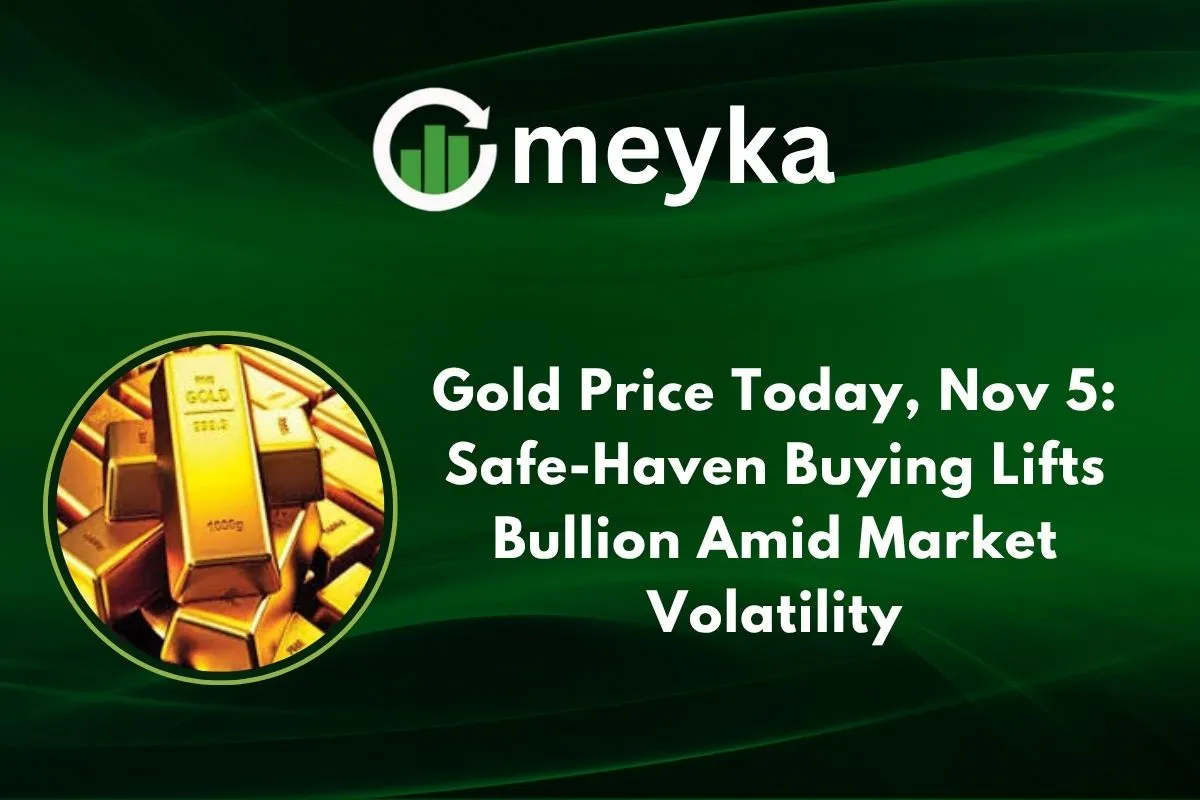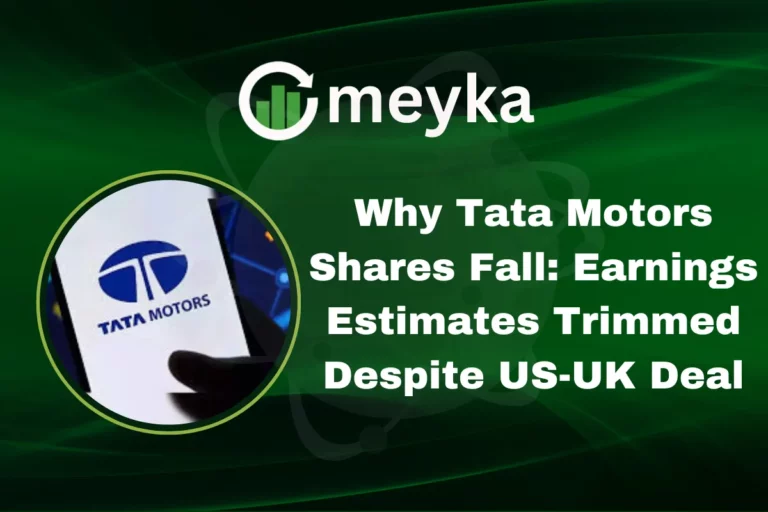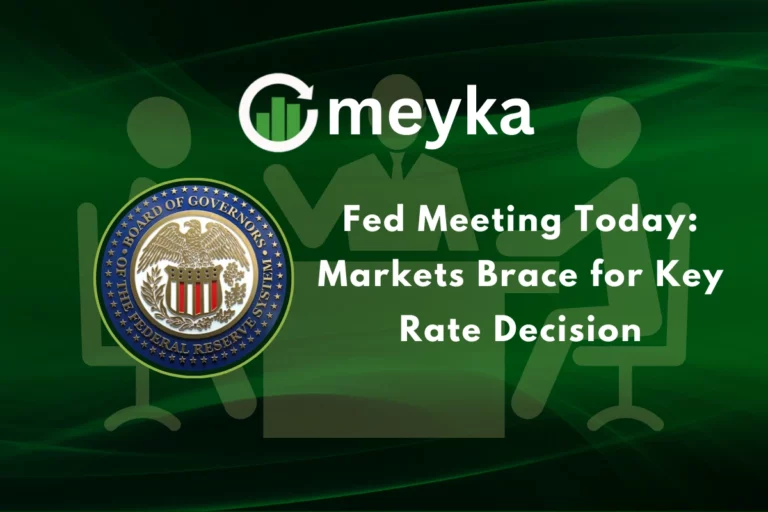Gold Price Safe-Haven Buying Lifts Bullion Amid Market Volatility
We’re watching the gold price climb again today, as investors seek safety amid shaky financial markets. Spot gold rose about 0.9% to US$3,965.49 per ounce early on Nov 5. This uptick comes as global uncertainty grows. When stocks wobble, or when policy and geopolitics spook markets, many turn to gold as a refuge. That’s exactly what we’re seeing now.
Gold Price Today, Quick Snapshot
Here’s the quick picture:
- Spot gold: ~ US$3,965.49/oz.
- U.S. December futures: ~US$3,974.10/oz.
- On Nov 4, gold closed around US$3,934.77/oz and was near a key support zone.
- Over the past month, gold has risen only about 0.21% but remains up ~49% on the year.
So, although the price made a jump today, it’s part of a larger, choppy upwards trend.
What’s Driving Today’s Gold Surge?
Market Volatility & Risk-Off Mood
We see global stocks under pressure. A risk-off mood means people feel less confident. When that happens, they move money into safer assets like gold. Reports say bargain-hunters jumped in as gold dipped and then rebounded.
Geopolitical Tensions / Global Uncertainty
The ongoing U.S. government shutdown and rising geopolitical risks are nudging investors toward gold. These events don’t by themselves drive gold, but they add fear, and fear boosts demand for a safe haven.
Central Bank Policies & Rate Expectations
The Federal Reserve (Fed) recently cut interest rates and signalled this may be the last cut for now. Markets now price a ~69% chance of a December cut vs. over 90% earlier. Lower interest rates tend to help gold, since gold doesn’t pay interest. But if rates stay higher, gold’s appeal weakens.
Currency Market Movement
The U.S. dollar remains strong, near three-month highs. A stronger dollar usually makes gold more expensive for holders of other currencies, which can dampen demand. So we have conflicting forces: safe-haven demand pushing gold up, but dollar strength and rate expectations capping the move.
Safe-Haven Demand Strengthens
Gold’s role as a “crisis shield” is clear today. Investors are comparing it to other safe havens (like government bonds, the Japanese yen, or the Swiss franc). But gold offers a physical asset that isn’t tied to any single government or bank.
In 2025, we’ve seen that trend accelerate: gold remains the go-to when risk spikes. One analysis said that this year, gold is the anchor while assets like bitcoin serve as higher-beta plays. So in our view, when things look uncertain, we turn to gold, and the data show many others are too.
Commodity & ETF Market Action
Gold ETFs & Fund Flows
The flow into gold-backed ETFs (exchange-traded funds) has been huge. For example, globally, physically backed gold ETFs recorded their largest monthly inflow in September and the strongest quarter on record. That means institutional and retail investors alike are buying into gold.
Physical Gold Market Update
Beyond ETFs, central banks are also buying gold. Many are using gold to diversify reserves, reduce reliance on the U.S. dollar, and add a hedge against inflation. In countries like Pakistan, local prices reflect global movements: on Nov 5, the price for 24-carat gold per tola was Rs 420,50,0, and 22-carat Rs 385,456. So whether you’re dealing globally or locally, demand is broad-based.
Technical Analysis: Where Is Gold Headed?
Key Support & Resistance Levels
Short-term chart watchers say: gold is trading near a support zone of US$3,930-3,940. A break below this could open the way toward US$3,800. On the upside, reclaiming US$4,000 would be psychologically and technically important.
Indicators & Chart Signals
Analysts expect gold to trade between ~US$3,940 and US$4,045 unless buyers or sellers dominate. A breakout above ~US$4,045 could push toward ~US$4,145. So we are in a zone of consolidation: gold is not yet running away, but it’s ready to move once a catalyst hits.
Impact on Investors
How Retail Investors Should View This Move
If you’re an everyday investor, here’s how we think about today’s move:
- This is a hedge;e, gold isn’t typically a fast-gain asset, but a stabiliser when risk rises.
- If you hold stocks, bonds, or other risk assets, adding some gold can reduce portfolio swings.
- That said, gold has no yield. So it’s not a substitute for income investments.
Physical vs Digital vs ETF Gold
You have options:
- Physical gold (bars, coins) gives you ownership of the metal itself, but often higher costs (storage, purity, local taxes).
- Gold ETFs give you exposure without owning coins, easier, more liquid. The large inflows show that many prefer this route.
- Digital gold platforms or small-token exposure can work for smaller budgets, but verify the provider’s credibility.
Given today’s backdrop, many investors may lean toward ETF exposure for flexibility and lower cost.
Conclusion
In short, the gold price is rising today as safe-haven buying gets a boost from global uncertainty and market jitteriness. We see a classic pattern: uncertainty → demand for gold → price rise. However, several headwinds remain: a strong U.S. dollar, less clear rate-cut expectations, and the fact that gold doesn’t yield interest. For now, the metal is trading in a consolidation range of ~US$3,940 to ~US$4,045. A move above could spark momentum; a break below could invite further downside. For investors, gold remains a meaningful hedge. It’s not a panacea, but in times like these, it plays its role well. As we watch the market, we’ll keep an eye on jobs data, Fed signals, and global risk events, because those are the triggers that may push gold out of its current range.
FAQS
Yes, gold prices often rise after a Fed rate cut. Lower rates make saving less rewarding. So, many people move money into gold because it feels safer and can grow in value.
Gold can be volatile, but not as wild as stocks or crypto. Its price changes with world events and monetary policies. Still, many see gold as safer than risky assets.
Yes, gold often rises during a market crash. When stocks fall and fear grows, investors move to gold. They trust gold to protect their money in hard times.
Disclaimer:
The content shared by Meyka AI PTY LTD is solely for research and informational purposes. Meyka is not a financial advisory service, and the information provided should not be considered investment or trading advice.






